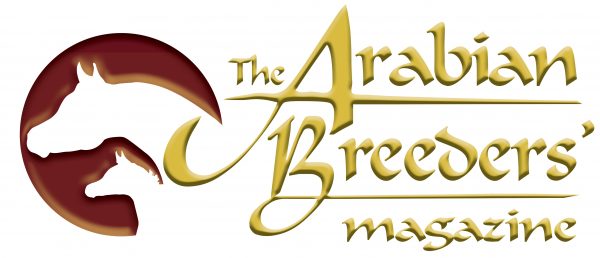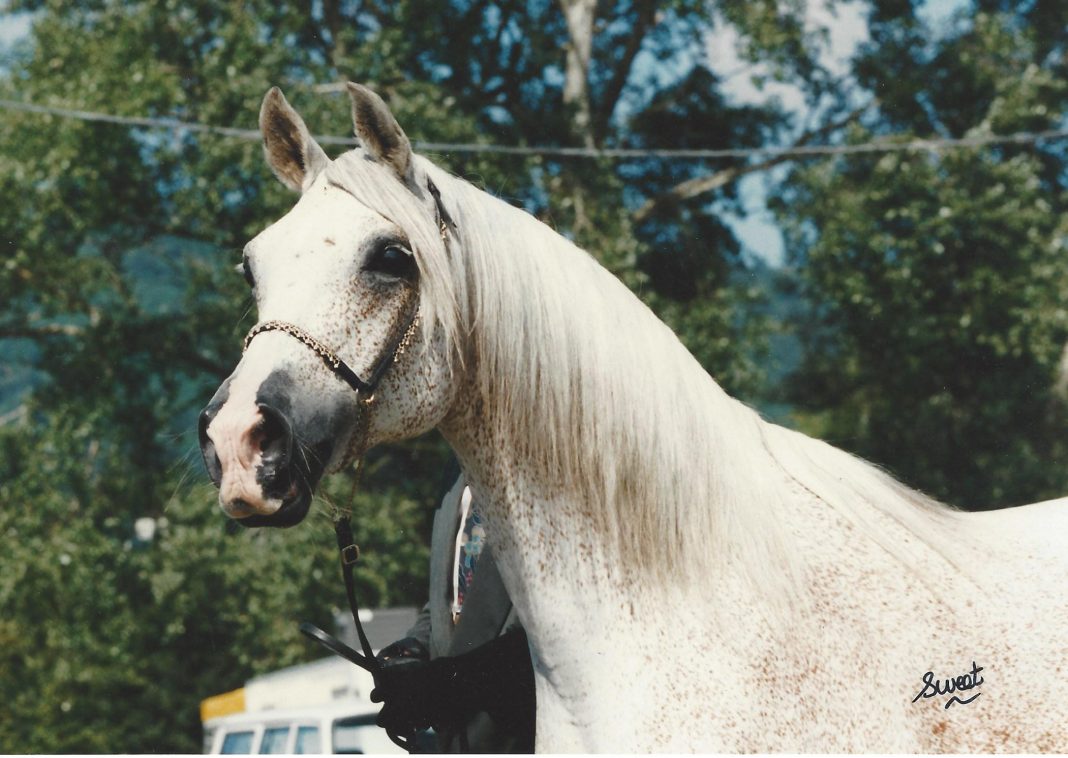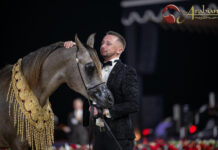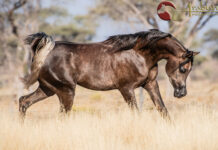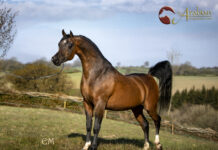The Breeders Interview – Holmes Farm Arabians, UK
In every edition of The Arabian Breeders’ Magazine, we speak to a selection of breeders from around the world about their experiences and successes with their breeding programme. We are delighted to share some of these incredibly insightful features online.
The Arabian Breeders’ Magazine (TABM): Please share with our readers a short background of your farm.
Richard Holmes, Holmes Farm Arabians, UK: After the passing of my good friend and employer, Patricia Lindsay, two years ago, I inherited her horses. Having worked for her for the previous 35 years, I have followed her breeding programme for a long time.
Founded in 1949 at Stockings Farm in Northamptonshire, originally with the stallion Rushti (Rosh x Rufeiya) and the grey filly, Rexena (Irex x Rafeena). No descendants of these two horses remain at Holmes Farm Arabians today, but Rexeena’s daughter by Rusti, Rosjanka, is the great-great-grand-dam to Vitorio TO (DA Valentino x Sol Natique), who was used in Poland in 2014/2015 when leased from Oak Ridge Arabians, USA.
The current horses all descend from Patricia’s Polish imports, going back to her travels there in 1958 and successive years. Patricia imported the famous mares Karramba (Witraz x Karmen II), Latawica (Wielki Szlem x Larissa), Lafirynda (Miecznik x Lala), Widawa (Gwarny x Warmia), Etyka (Gwarny x Etna) and, more recently, Cygaretka (Fanatyk x Cizemka). Descendants of these mares are still present on the farm today. The stallions bought or exchanged that have been used are Gerwazy (Doktryner x Gwara), Banat (El Azrak x Bandola) and Edeon (Eldon x Emigrantka) from Poland, and Burkan (Saladin II x Biruta) from England.
Patricia imported horses for other people both in Britain and America and bred many horses herself that were exported around the world. The stallion, Karadjordje (Gerwazy x Karramba) went to America, the mare Lalage (Gerwazy x Lafirynda) went to Sweden and became the dam of the famous Aladdinn (by Nureddin), while in England, White Lightning (Burkan x Latawica) had many offspring of note including World Champion Camargue (ex Velvet Shadow).
While Patricia’s ideals were maintained over the years, towards the end of her life an outcross became imperative as the horses became quite closely related and so several stallions have been tried. These included the WH Justice *Magnum Psyche x Vona Sher-Renea) son AV Montoya (ex Metelica), the Dhruv (El Shaklan x Despina) son Sisyrinchium (ex Sakuntala), the ZT Magnanimus (AB Magnum x ZT Shakmontelite) son Alfabia Aragon (ex ZT Shakbey), the Abha Qatar (Marwan Al Shaqab x ZT Ludjkalba) son Alonzo (ex Casablanca Bint Djammal), and the straight Egyptian stallion Muhaned Al Rayyan (Ashhal Al Rayyan x Al Wajba Al Rayyan), all with great success proving that the genetic base of the mares is sound and strong.
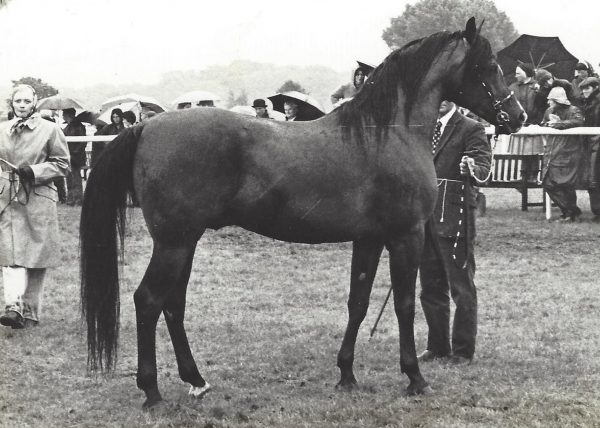
Banat. Credit Holmes Farm archives.
TABM: What have been the bloodlines that you have focused on, and why did you choose them? Has this focus changed over the years?
Richard: Naturally, the bloodlines have all been Polish over the years. The female lines are all still present, and the Karramba and Latawica families dominate. When combined with Banat, the superb mare Kula, out of Kantara (Gerwazy x Karramba), was born as was Reserve British National Champion Stallion Lotny, out of Flying Light (Gerwazy x Latawica). These two horses continue to influence the stud today. The challenge was then to move on, and the beautiful Polish National Champion Stallion Edeon (Eldon x Emigrantka) was purchased. He brought great charisma coupled with great legs and powerful movement. He was followed by Ekwipunek (Eukaliptus x Equitana), who brought size as well as the beautiful Eukaliptus (Bandos x Eunice) neck.
TABM: What were your breeding goals when you first started? Have they changed over the years?
Richard: The bloodlines have always been chosen for great legs, kind, gentle temperaments, and a beauty that improves with age. This is what drew Patricia to the Polish Arabian. The goal was, and is still, to produce beautiful, tough, sound horses able to fulfil many roles. The focus is still the same but as people have become taller, so have the horses to accommodate them.
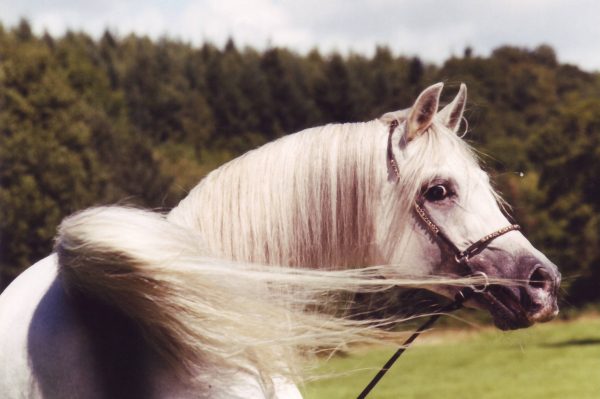
Edeon. Credit Sweet Photography.
TABM: Please share key moments that stand out in the early stages of your breeding programme?
Richard: The travel around Communist Poland by Patricia was the biggest moment that shaped the stud, accompanied by the global acceptance of Polish Arabians. Patricia met the Polish breeders and picked their brains at the same time as selecting their horses. She formed great friendships that I have continued today.
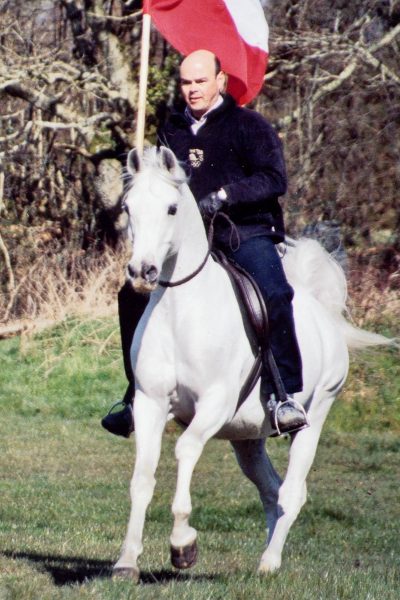
Edeon and Richard. Credit Sue Bundy.
TABM: When was it that you realised that you were a successful breeder? And what, in your opinion, defines a ‘breeder’?
Richard: For me, the success came when showing the Banat son and daughter, Lotny and Kula. For Patricia, it was when the horses she bred went on to be successful in endurance, hunting or, as in the case of White Lightning, to create their own dynasties.
Having worked alongside Patricia and known breeders such as Finn Guiness, Michael Pitt-Rivers, Andrzej Krzysztalowicz, Marek Trela, Ignac Jaworowski and Jerzy Bialobok, these people are the true definition of ‘breeders’. They were, and are, people who live and breathe the Arabian horse. They looked to improve each generation, could evaluate each horse and plan each mating. They would all agree that a small measure of luck was needed, but each had his ideal standard that they worked towards. They were also of an era where to be “commercial “was not essential as demand for their horses was virtually guaranteed. This freed them to develop their own recognisable type of horse. Nowadays, out of financial necessity, many breeders have become simply followers of fashion as dictated by the market or their trainers.
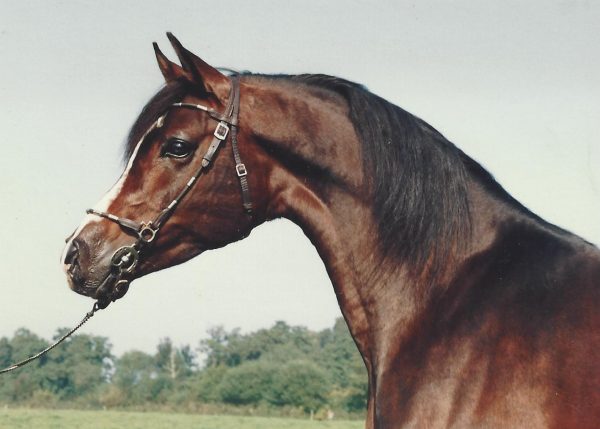
Lotny. Credit Ella Galinski.
TABM: As a breeder, how do you feel about the showing world? Do you think that changes are needed to celebrate breeders more?
Richard: The showing world is distorting the breed, the market and its popularity among the rest of the horse world. Our horses have become more extreme in type, longer and finer in the legs, and shallower in the girth. You can’t show a horse without the plastic bag shakers and a trainer. Not all is bad, but the grass root one or two horse owners are put off by all of this and are turning away from the breed.
I don’t think that we need to celebrate breeders more; I feel that we need to make showing more accessible to a wider number of people with judges being more flexible and accountable. As a judge and breeder, I have tried to stay away from the politics of showing, as Patricia did, and look for the best horse regardless of handler, owner or breeder. This should mean that anyone with a good horse has an equal chance, and be fair to all.
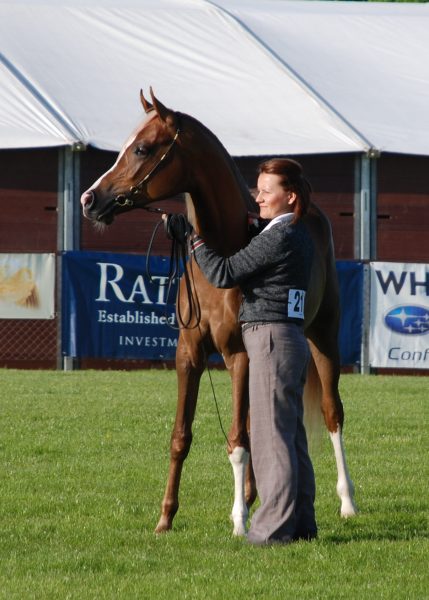
Louis D’Or and Aneta. Credit Holmes Farm archives.
TABM: Do you think that breeders are a dying breed, pardon the pun?
Richard: Yes, these days the truly dedicated followers of their own ideals are few and far between. With the need to be commercially viable in a small, very competitive market, the fashions of that market dictate how horses are bred. The huge influence of the wealthy breeders from the Arab countries has transformed the international stage tipping the influence of a few select stallions and their descendants to dominate the breeding programmes around the world.
TABM: Do you think that breeders and dedicated breeding programmes still have a place in the world today?
Richard: Breeders with dedicated breeding programmes must have a place in the world today. We are rapidly coming to a stage where the same bloodlines can be found everywhere, and where outcrosses are becoming hard to find. Without dedicated breeders following their own ideals, we will have a global population of very closely related horses.
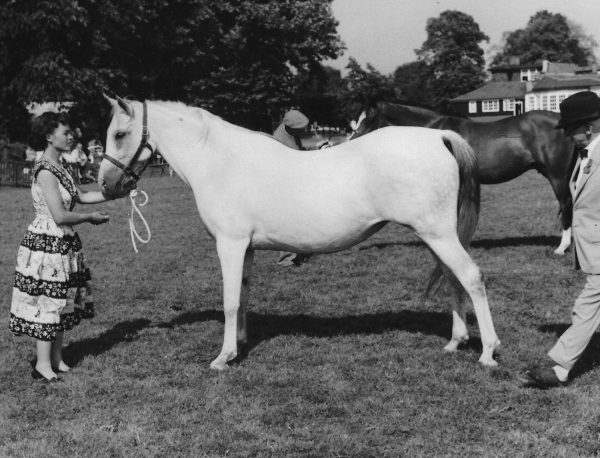
Patricia and Rexeena. Credit Holmes Farm archives.
TABM: Over the years, what have been your key successes, perhaps the ones that define your farm?
Richard: The first would have to be global acceptance of the Polish Arabian horse. Patricia had a huge battle when she first imported these horses in 1958. Next would be Banat; he won the hearts of Arabian breeders around the world and set a new direction in the Holmes Farm breeding programme. His daughter, Kula, was Champion at the Royal Show three times, among many other wins. Finally, to view pedigrees of horses from all around the world and find the names of horses bred by Patricia in a huge percentage of them, during an age without artificial insemination or embryo transfer, is quite remarkable. This is the mark of a breeding programme that truly has stood the test of time.
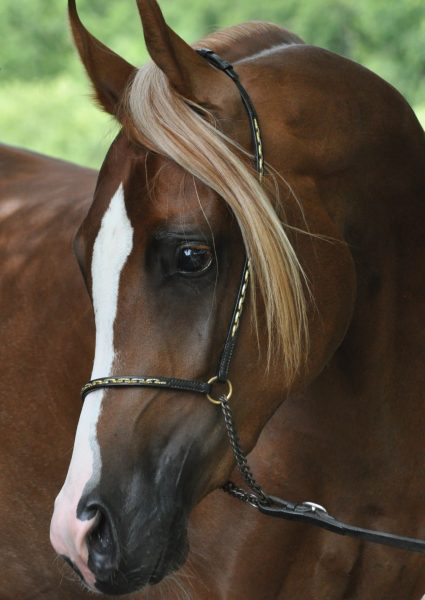
Louis D’Or. Credit Jan Maciejewski.
TABM: And finally, what is next for you and your breeding programme?
Richard: It is now time for us to move Holmes Farm Arabians on. We have always looked to Poland for our stallion outcrosses and this year, I visited the State Stud of Janów Podlaski on a mission to find the next Banat. I came home with the beautiful young stallion Pistolero (Kahil Al Shaqab x Pinga). He was off the racecourse – he won his first race – and was untried at stud, but he embodies all that we strive to breed. Although he is royally bred – by and out of World Champions – he has the short cannons, short back, deep girth, fantastic movement and type that we look to breed, and is a true outcross for us. Pistolero is with us for just this year but we have retained frozen semen from him for the future. His temperament is beautiful and he charms everyone he meets. We look forward to an exciting 2018 and his foals.
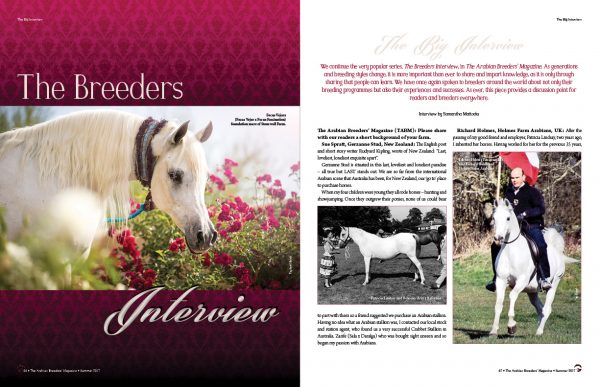
First printed in The Arabian Breeders’ Magazine Volume I Issue IV July 2017. To enjoy further content such as this, please visit The Arabian Magazine Shop.
